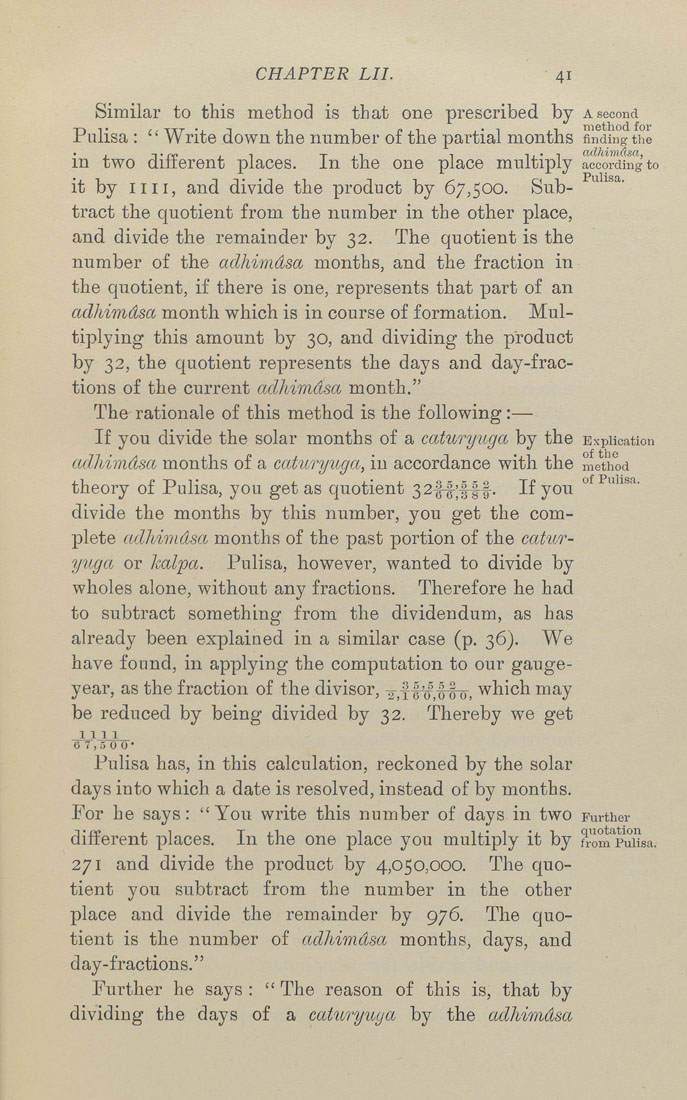CHAPTER LII. 41
Similar to this method is that one prescribed by a second
Pulisa : '' Write down the number of the partial months finding the
, T rf /I T,i 1 ij'i adhimdsa,
m two different places. In the one place multiply according to
it by nil, and divide the product by 67,500. Sub¬
tract the quotient from the number in the other place,
and divide the remainder by 32. The quotient is the
number of the adhimdsa months, and the fraction in
the quotient, if there is one, represents that part of an
ctdhimdsa month which is in course of formation. Mul¬
tiplying this amount by 30, and dividing the product
by 32, the quotient represents the days and day-frac¬
tions of the current adliimdsa month."
The rationale of this method is the following:—
If you divide the solar months of a caturyugct by the Explication
culhimdsa months of a caturyuga, in accordance with the method
theory of Pulisa, you get as quotient 32-||-;-|ff. If you
divide the months by this number, you get the com¬
plete ctdhimdsct months of the past portion of the ccttttr-
yuga or kalpct. Pulisa, however, wanted to divide by
wholes alone, without any fractions. Therefore he had
to subtract something from the dividendum, as has
already been explained in a similar case (p. 36). We
have found, in applying the computation to our gauge-
year, as the fraction of the divisor, -2,ff "cr.l-fo", which may
be reduced by being divided by 32. Thereby we get
1111
6 7,5 00*
Pulisa has, in this calculation, reckoned by the solar
days into which a date is resolved, instead of by months.
For he says: "You write this number of days in two Further
different places. In the one place you multiply it by h^mVuUsa.
271 and divide the product by 4,050,000. The cjuo-
tient you subtract from the number in the other
place and divide the remainder by 976. The quo¬
tient is the number of ctdhimdsct months, days, and
day-fractions."
Further he says : " The reason of this is, that by
dividing the days of a caturyitgct by the ctdhimdsa
|








